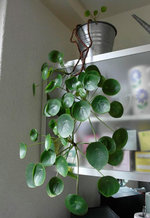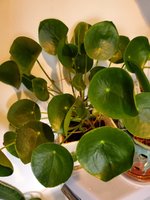Crazy Diamond
Omono
Ey, I got a small cutting of Pilea peperomioides, any of you guys have this cool plant? anyone try it as bonsai or kusamono? I know it never could be a regular bonsai by any means but they make woody trunks with time and have a interesting grow habit.
The plant itself have a really interesting history. It was first collected in 1906 and again in 1910, in Yunnan China. In 1945, the species was found again by Norwegian missionary Agnar Espegren, he took cuttings of it back to Norway and from there it was spread throughout Scandinavia, Missionary plant or Swedish ivy are common names thanks to that. It spread among amateur gardeners through cuttings, without being known to Western botanists and it was classified in the 1980s.
Although the plant is in danger of extinction in its native habitat, it is among the most popular indoor plants today, surely you have seen in recent years posts on social media with this plant, it has become very fashionable and trendy as indoor plant, a lot of people have gone crazy for it!



The plant itself have a really interesting history. It was first collected in 1906 and again in 1910, in Yunnan China. In 1945, the species was found again by Norwegian missionary Agnar Espegren, he took cuttings of it back to Norway and from there it was spread throughout Scandinavia, Missionary plant or Swedish ivy are common names thanks to that. It spread among amateur gardeners through cuttings, without being known to Western botanists and it was classified in the 1980s.
Although the plant is in danger of extinction in its native habitat, it is among the most popular indoor plants today, surely you have seen in recent years posts on social media with this plant, it has become very fashionable and trendy as indoor plant, a lot of people have gone crazy for it!




